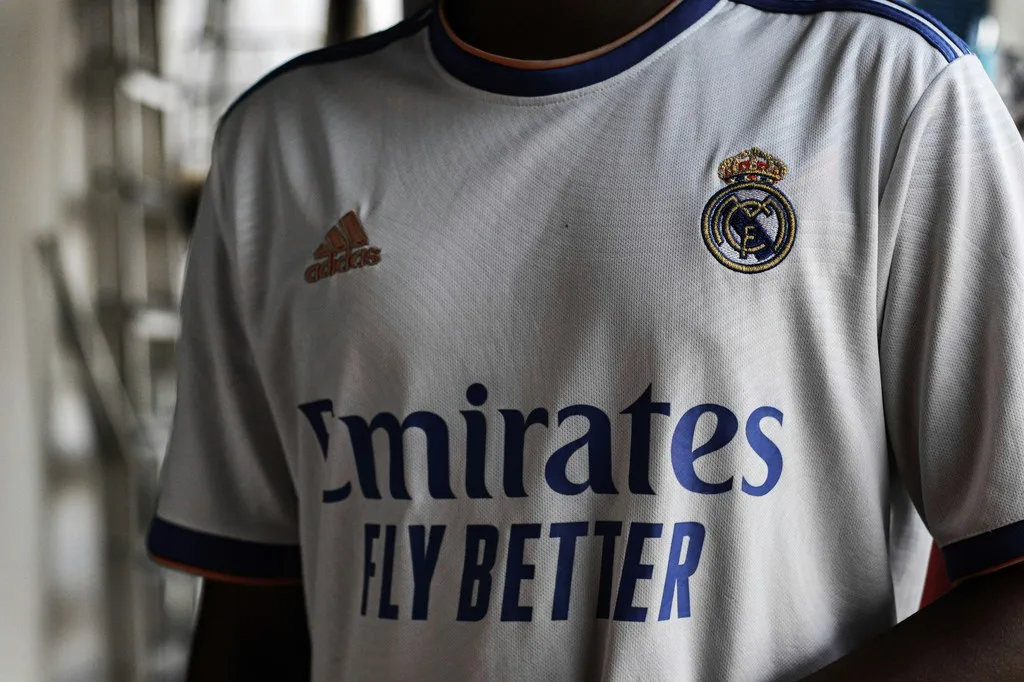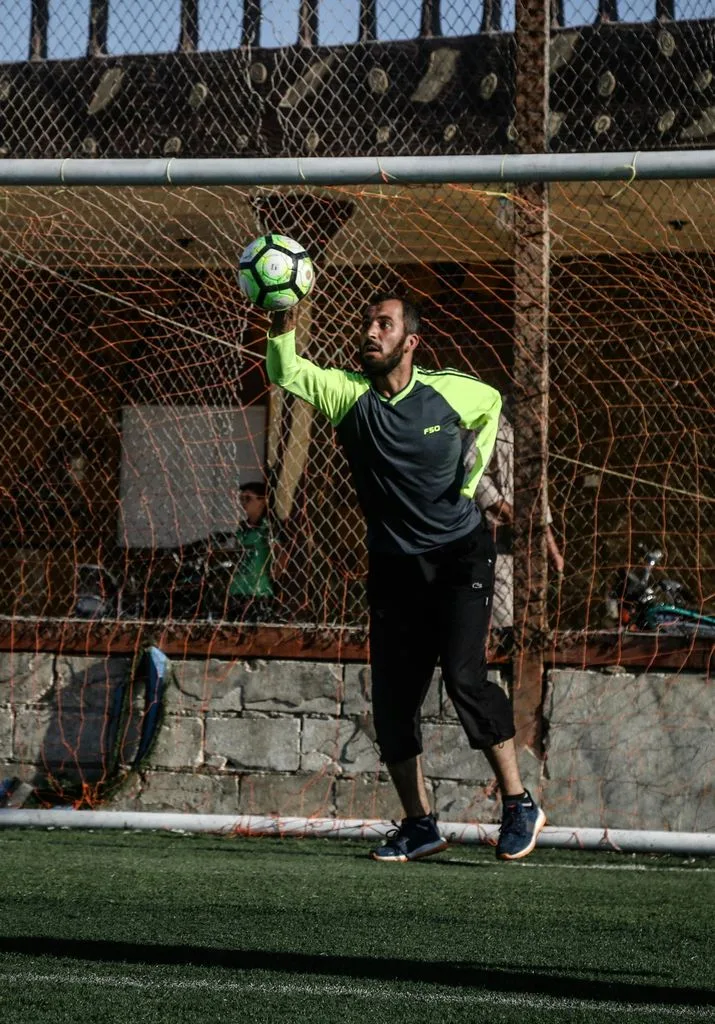
Introduction
Soccer jerseys hold a significant place in the hearts of fans worldwide, transcending mere sportswear to become symbols of team identity and player performance. Their evolution over decades mirrors the changing landscape of football culture. The criteria for selecting the best soccer jerseys encompass aesthetic appeal, historical relevance, and innovation in design. These jerseys not only influence fans but also carry immense cultural significance, shaping global recognition within the soccer community.
Historical Significance
Exploring the annals of soccer jersey history unveils iconic kits that transcend time, leaving an indelible mark on the sport’s fashion landscape. Let’s delve into three legendary jerseys that have shaped the narrative of football attire.
Napoli’s 1990/91 Home Kit
Case in Point: The SSC Napoli 90-91 Home kit stands out as a beacon of innovation in soccer fashion. Its unique color scheme, featuring bold hues of azure blue and white, captured the essence of Italian flair. This jersey emerged during a pivotal period for Napoli, coinciding with Maradona’s peak performance and their Serie A triumphs. Beyond the pitch, its impact extended to fashion runways, influencing designers worldwide.
AC Milan Opel Kit
Case in Point: The AC Milan Opel Kit revolutionized Italian style with its sleek design and sponsorship integration. Milan’s iconic red and black stripes adorned this jersey, symbolizing power and prestige on the European stage. This kit not only reflected Milan’s dominance but also set trends in football apparel branding. Its legacy endures through generations of Rossoneri faithful.
Arsenal JVC Jersey
Case in Point: The Arsenal JVC Jersey marked a transition in design philosophy for the Gunners, blending tradition with modernity. This kit garnered a global fanbase drawn to its classic red body and white sleeves, embodying Arsenal’s rich heritage. Its longevity in popularity speaks volumes about the timeless appeal of well-crafted football kits.
Unveiling these historical gems illuminates the profound impact that soccer jerseys have had on both sports culture and fashion trends over time.
Design Elements
Soccer jerseys are not merely garments but intricate pieces of design that encapsulate the essence of a team’s identity. The color palette plays a pivotal role in conveying emotions, values, and history. From the vibrant red of Manchester United to the royal blue of Chelsea, each hue carries symbolic weight. Scientific research findings suggest that teams adorned in darker or red jerseys may hold a psychological advantage on the field, appearing more dominant and intimidating to opponents.
Logo placement on soccer jerseys is strategic, aiming to enhance brand visibility while maintaining aesthetic appeal. Logos have evolved over time, transitioning from simple emblems to intricate designs that reflect a club’s heritage and aspirations. Sponsor integration has become commonplace, with brands seamlessly woven into the fabric of football attire.
The fabric and texture of modern soccer jerseys have undergone significant advancements, blending comfort with performance. Technological innovations have led to lighter, more breathable materials like cotton, nylon, and polyester blends. These fabrics are engineered for optimal performance on the pitch, offering moisture-wicking properties to keep players dry and comfortable throughout the game.
What’s Next?
As technology continues to drive advancements in sports apparel, we can anticipate even greater strides in fabric development. The future holds promises of sustainable practices in jersey manufacturing, aligning with eco-conscious initiatives across industries.
Iconic Features
Stripes and Patterns
When examining soccer jerseys, one cannot overlook the significance of stripes and patterns in their design. These elements go beyond mere aesthetics, carrying deep symbolism that resonates with both players and fans alike. The evolution of patterns on jerseys has been a fascinating journey, reflecting not only changes in fashion but also the cultural shifts within the sport.
Historically, teams began incorporating stripes and various colors into their kits during the early 20th century. This marked a pivotal moment where shields and emblems started appearing on jerseys to identify players by their numbers. For instance, Adidas has utilized diamond graphics on Spanish national team jerseys to symbolize speed, style, and energy, showcasing a fusion of tradition and innovation.
The influence of stripes and patterns extends beyond the field, impacting fashion trends globally. Collaborations between sportswear brands like Adidas and renowned soccer superstars such as Lionel Messi have redefined branding strategies in the industry. These partnerships not only elevate the visual appeal of jerseys but also create a sense of exclusivity for fans seeking unique collectibles.
Crests and Emblems
The crest or emblem adorning a soccer jersey holds profound historical roots, often tracing back to a club’s founding principles or regional heritage. Over time, these symbols have evolved from simple designs to intricate representations of a team’s identity. Fans form an emotional connection with these crests, seeing them as more than just logos but as embodiments of tradition and loyalty.
For example, clubs like Manchester United have partnered with manufacturers like Puma to produce kits that reflect their rich history. The intricate detailing on these jerseys pays homage to past triumphs while embracing modern design trends. This blend of nostalgia and innovation resonates with supporters who cherish the club’s legacy.
Typography and Numbers
Typography plays a crucial role in branding soccer jerseys, creating visual identities that are instantly recognizable on the pitch. Customization trends have surged in recent years, allowing fans to personalize their favorite player’s jersey with names and numbers. This trend not only fosters fan engagement but also enhances player identification during matches.
Innovations in printing technology have made it easier for clubs to produce customized jerseys quickly and efficiently. Players’ names emblazoned across their backs serve as beacons of individuality within the team structure. As soccer continues to evolve both on and off the field, typography remains a powerful tool for fostering connections between clubs, players, and fans alike.
Memorable Collaborations
Collaborations in the realm of soccer jerseys have sparked creativity and excitement among fans, blending the worlds of sports and fashion seamlessly. Let’s explore three remarkable partnerships that have left a lasting impact on the soccer apparel landscape.
Undefeated x Birmingham City FC
In a fusion of streetwear aesthetics and football culture, the collaboration between Undefeated and Birmingham City FC brought forth a collection that resonated with urban fashion enthusiasts. The limited edition appeal of this partnership elevated the desirability of the jerseys, turning them into coveted collector’s items among die-hard fans.
KidSuper x Barnsley
The collaboration between KidSuper and Barnsley showcased a harmonious blend of artistic expression and community engagement. By infusing Barnsley’s heritage with KidSuper’s avant-garde designs, the jerseys became symbols of unity and creativity. This fusion of styles not only captivated fans but also highlighted the power of collaboration in igniting passion within football communities.
Nigeria Home 2018 Kit
The Nigeria Home 2018 Kit stands out for its bold cultural representation through vibrant colors and intricate patterns. The jersey’s choice of hues pays homage to Nigerian traditions while making a bold statement on the global fashion stage. Its impact transcended sports, influencing runway trends and solidifying Nigeria’s position as a trailblazer in soccer fashion.
See Also
Best 10 Soccer Shirts Fans Should Check Out
Top 10 Coolest Soccer Shirts of 2023-24 Season
Top 10 Classic Soccer Shirts Every Fan Needs




